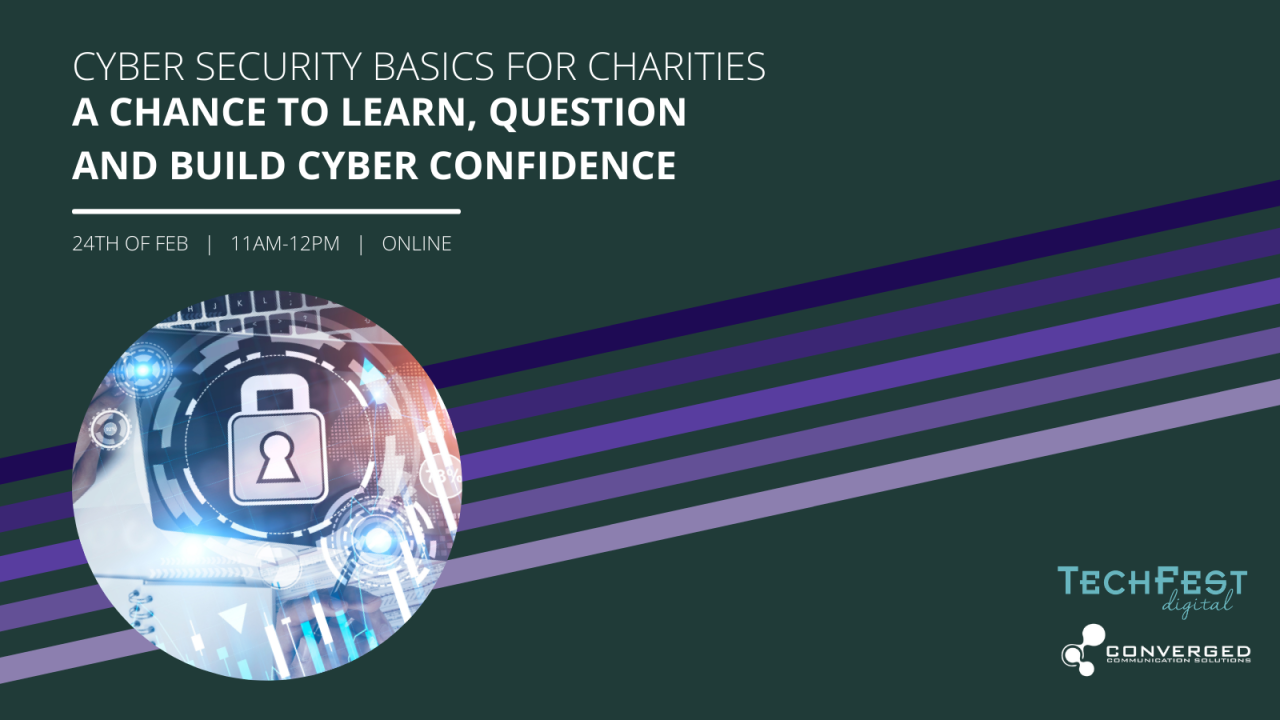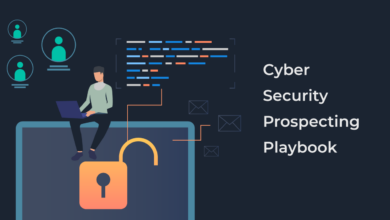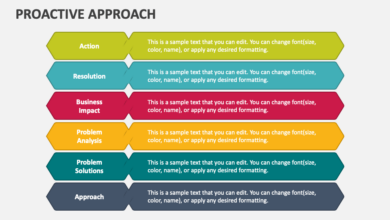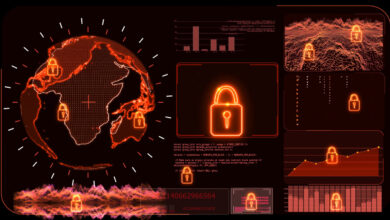
UK Charities Face Growing Cyber Threats
Charity based organizations in the UK are vulnerable to cyber attacks, a sobering reality in today’s digital landscape. These vital organizations, dedicated to improving lives, often lack the resources and expertise to defend against sophisticated cyber threats. From phishing scams targeting unsuspecting staff to ransomware crippling operations, the risks are substantial and far-reaching. This vulnerability not only jeopardizes sensitive donor data and operational efficiency but also undermines public trust and the very mission these charities strive to achieve.
We’ll explore the specific threats, the legal ramifications, and practical steps charities can take to bolster their cybersecurity defenses.
The consequences of a successful cyberattack on a charity can be devastating. Financial losses, reputational damage, and the erosion of public trust can severely hamper their ability to continue providing essential services. Understanding the unique challenges faced by charities – limited budgets, smaller teams, and often a lack of dedicated IT expertise – is crucial to developing effective solutions.
This post will delve into these challenges, offering practical advice and resources to help UK charities strengthen their cybersecurity posture.
Types of Cyber Threats Facing UK Charities

The digital age has brought incredible opportunities for UK charities, enabling them to reach wider audiences and manage operations more efficiently. However, this increased reliance on technology also exposes them to a growing range of cyber threats. These attacks can have devastating consequences, impacting not only their operational capacity but also their vital fundraising efforts and public trust.
Understanding these threats is the first step towards effective protection.
Charities, often operating with limited budgets and IT expertise, are particularly vulnerable to cyberattacks. Unlike for-profit organizations, they may lack the resources to invest in robust cybersecurity infrastructure and skilled personnel. This makes them attractive targets for malicious actors seeking financial gain or aiming to disrupt their operations.
Common Cyber Threats and Their Impact
The following table Artikels some of the most prevalent cyber threats facing UK charities, their impact, and potential mitigation strategies.
| Threat Type | Description | Impact on Charity Operations | Mitigation Strategies |
|---|---|---|---|
| Phishing | Deceptive attempts to acquire sensitive information such as usernames, passwords, and credit card details by masquerading as a trustworthy entity in electronic communication. This often involves emails, text messages, or fake websites. | Data breaches leading to identity theft, financial losses, and reputational damage. Disruption of operations if key personnel accounts are compromised. | Employee training on phishing awareness, implementing strong email filtering systems, using multi-factor authentication (MFA), and regularly reviewing security protocols. |
| Ransomware | Malware that encrypts a victim’s files, making them inaccessible unless a ransom is paid. | Loss of critical data, disruption of services, financial losses due to ransom payments and recovery costs, potential reputational damage due to data loss or service disruption. This can significantly hinder fundraising efforts and service delivery. | Regular data backups (offline and offsite), strong endpoint protection, employee training on safe email practices and avoiding suspicious links, and incident response planning. |
| Denial-of-Service (DoS) Attacks | Attempts to make a machine or network resource unavailable to its intended users. This is often achieved by flooding the target with superfluous requests. | Website outages, disruption of online fundraising campaigns, inability to access critical systems, loss of donor trust and potential loss of donations. | Investing in robust network infrastructure, implementing DDoS mitigation solutions, and working with a reputable hosting provider. |
| Malware Infections | A broad category encompassing various types of malicious software designed to damage, disrupt, or gain unauthorized access to computer systems. This can include viruses, worms, trojans, and spyware. | Data breaches, system instability, operational disruption, financial losses, and reputational damage. Malware can compromise sensitive donor information, leading to legal issues and loss of public trust. | Regular software updates, robust antivirus and anti-malware software, employee training on safe browsing habits, and secure network configurations. |
Unique Vulnerabilities of Charities
Charities often face unique vulnerabilities compared to for-profit organizations. Their reliance on volunteers, who may not have the same level of cybersecurity awareness as paid IT staff, increases their risk profile. Furthermore, limited budgets often restrict their ability to invest in advanced security solutions. The sensitive nature of the data they handle, including personal information of beneficiaries and donors, also makes them a prime target for cybercriminals.
The emotional appeal of many charities can also be exploited in sophisticated phishing campaigns.
Financial and Reputational Damage
Successful cyberattacks can inflict significant financial and reputational damage on charities. Ransom payments, data recovery costs, legal fees, and the loss of donations can severely strain their already limited resources. A data breach can lead to a loss of donor trust, impacting future fundraising efforts. The negative publicity associated with a cyberattack can also damage their reputation and make it difficult to attract volunteers and funding.
For example, a small charity experiencing a ransomware attack might lose crucial donor records, delaying fundraising appeals and causing a significant financial shortfall. A larger charity might face substantial fines for data protection breaches, further exacerbating the financial impact.
Data Security and Privacy Risks
The digital age presents unprecedented opportunities for UK charities, but it also exposes them to significant data security and privacy risks. A data breach can not only damage a charity’s reputation and erode public trust, but also lead to hefty fines and legal action. Understanding and mitigating these risks is paramount for ensuring the continued success and ethical operation of these vital organisations.Data protection regulations, particularly the General Data Protection Regulation (GDPR), place strict obligations on organisations handling personal data.
Compliance is crucial, not just to avoid penalties, but to maintain the confidence of donors, volunteers, and beneficiaries. Failure to comply can result in significant financial penalties and reputational damage, undermining the charity’s ability to operate effectively.
GDPR Compliance for UK Charities
The GDPR applies to all organisations processing personal data of individuals within the European Union, including UK charities even after Brexit. This regulation requires charities to implement robust data protection measures, including lawful basis for processing, data minimisation, and appropriate security measures to protect against unauthorised access, loss, or alteration of data. Key aspects include obtaining explicit consent for data processing, ensuring data accuracy, and providing individuals with rights to access, rectify, and erase their data.
Failure to comply can result in fines of up to €20 million or 4% of annual global turnover, whichever is greater.
Examples of Sensitive Data Held by Charities and Potential Consequences of a Data Breach
Charities often hold highly sensitive personal data, including details of vulnerable individuals, beneficiaries’ health information, financial details of donors, and volunteer records. A data breach could expose this information to malicious actors, leading to identity theft, financial loss, reputational damage for the charity, and emotional distress for those affected. For example, a breach exposing the medical records of individuals supported by a health charity could lead to serious consequences, including fraud or blackmail.
Similarly, a breach revealing donor details could damage the charity’s fundraising efforts and erode public trust. The consequences extend beyond financial penalties; the damage to a charity’s reputation and the erosion of public trust can be devastating and long-lasting.
Data Security Policy Framework for a Small to Medium-Sized UK Charity
A robust data security policy is essential for protecting sensitive data. A small to medium-sized charity’s framework should include:
- Data Protection Officer (DPO): Appointing a DPO to oversee data protection compliance.
- Data Inventory: A comprehensive inventory of all data held, including location, type, and sensitivity.
- Access Control: Implementing strict access controls, granting access only to authorised personnel on a need-to-know basis.
- Data Encryption: Encrypting sensitive data both in transit and at rest to prevent unauthorised access.
- Regular Security Audits: Conducting regular security audits to identify vulnerabilities and ensure compliance.
- Staff Training: Providing regular training to staff on data security best practices, including phishing awareness and password management.
- Incident Response Plan: Developing a comprehensive incident response plan to deal with data breaches effectively and efficiently.
- Data Backup and Recovery: Implementing a robust data backup and recovery system to ensure business continuity in case of a data breach or system failure.
This framework, while tailored for smaller charities, emphasizes the core principles applicable to all organisations handling personal data. Adapting and expanding these measures based on the charity’s specific needs and risk profile is crucial for effective data protection. Regular review and updates are vital to maintain the effectiveness of the policy in the face of evolving threats.
Lack of Resources and Expertise: Charity Based Organizations In The Uk Are Vulnerable To Cyber Attacks
The cybersecurity landscape is constantly evolving, presenting a significant challenge for UK charities, particularly those with limited resources. The disparity in cybersecurity capabilities between large and small charities is stark, impacting their ability to protect sensitive data and maintain operational integrity. This difference stems from varying budgets, staffing levels, and access to specialized expertise.The reality is that larger charities often have dedicated IT departments, cybersecurity specialists, and substantial budgets allocated to security measures.
They can afford sophisticated software, regular security audits, and employee training programs. In contrast, smaller charities frequently rely on volunteers or a single overworked member of staff to manage all IT functions, including cybersecurity. This leaves them significantly more vulnerable to cyberattacks due to a lack of specialized knowledge and the inability to invest in robust security infrastructure.
Cybersecurity Resource Disparities Between Large and Small Charities
Large charities typically possess dedicated IT infrastructure, including robust firewalls, intrusion detection systems, and data encryption technologies. They also employ dedicated cybersecurity professionals who can monitor threats, respond to incidents, and implement preventative measures. These professionals often have extensive experience in dealing with various cyber threats, enabling proactive risk management. Smaller charities, however, may lack even basic security measures, relying on free or outdated software and lacking the expertise to effectively manage their digital assets.
This leaves them exposed to a wide range of threats, from phishing attacks to ransomware infections. For example, a small local food bank might lack the resources to implement multi-factor authentication, making their systems susceptible to unauthorized access.
Strategies for Improving Cybersecurity Awareness Among Charity Staff and Volunteers, Charity based organizations in the uk are vulnerable to cyber attacks
Improving cybersecurity awareness is crucial for all charities, regardless of size. A multifaceted approach is necessary, combining training, communication, and the implementation of clear security policies. Regular workshops and training sessions can educate staff and volunteers about common threats, such as phishing emails and malicious websites. These sessions should include practical exercises and simulations to help reinforce learning.
Furthermore, clear and concise security policies should be developed and communicated effectively to all staff and volunteers. These policies should Artikel acceptable internet usage, password management protocols, and procedures for reporting security incidents. Finally, regular security awareness campaigns, incorporating engaging materials like infographics and short videos, can maintain a high level of vigilance and reinforce best practices.
A Training Program Focusing on Phishing Recognition and Safe Internet Practices
A comprehensive training program for charity employees should prioritize phishing recognition and safe internet practices. The program should begin with an overview of common phishing techniques, including examples of deceptive emails and websites. Participants should learn to identify suspicious links, attachments, and requests for personal information. Practical exercises, such as identifying phishing attempts in simulated emails, are essential for developing critical thinking skills.
The program should also cover safe browsing practices, emphasizing the importance of using strong passwords, regularly updating software, and being cautious when using public Wi-Fi. Finally, the program should Artikel clear procedures for reporting suspected phishing attempts and other security incidents. This structured approach will equip employees with the knowledge and skills necessary to protect themselves and their organization from cyber threats.
Cybersecurity Best Practices for UK Charities
Protecting your organisation from cyber threats is paramount. The consequences of a successful attack can be devastating for a charity, impacting not only its finances but also its reputation and ability to serve its beneficiaries. Implementing robust cybersecurity measures is no longer a luxury but a necessity. This section Artikels essential practices that UK charities should adopt to bolster their defences.
A proactive approach to cybersecurity is crucial. It’s about building a layered defence, making it significantly harder for attackers to breach your systems. This requires a combination of technical measures, staff training, and a well-defined incident response plan.
Essential Cybersecurity Measures for UK Charities
A strong cybersecurity foundation relies on several key elements. These measures are not isolated but work together to create a comprehensive security posture. Neglecting even one can significantly weaken your overall protection.
- Strong Password Management: Implement a robust password policy that mandates strong, unique passwords for all accounts. Consider using a password manager to securely store and manage these passwords. Regular password changes are also vital.
- Multi-Factor Authentication (MFA): Enable MFA wherever possible. This adds an extra layer of security, requiring users to provide a second form of authentication (such as a code from a mobile app or a security token) in addition to their password. This significantly reduces the risk of unauthorized access even if passwords are compromised.
- Regular Software Updates: Keep all software, including operating systems, applications, and antivirus programs, updated with the latest security patches. Outdated software is a major vulnerability that attackers frequently exploit.
- Employee Training and Awareness: Regularly train staff on cybersecurity best practices, including phishing awareness, safe browsing habits, and the importance of reporting suspicious activity. Phishing remains a primary attack vector, and educating staff is a critical line of defence.
- Data Backup and Recovery: Regularly back up all important data to a secure, offsite location. This ensures business continuity in the event of a data loss incident, whether accidental or malicious. Test your recovery procedures regularly to ensure they are effective.
- Network Security: Implement a firewall and intrusion detection/prevention systems to monitor and protect your network from unauthorized access. Regularly review and update your network security configurations.
- Data Encryption: Encrypt sensitive data both in transit (using HTTPS) and at rest (using encryption tools). This protects data even if a breach occurs.
Incident Response Plan Implementation
Having a well-defined incident response plan is critical for minimizing the damage caused by a cyberattack. This plan should Artikel clear procedures for identifying, containing, eradicating, recovering from, and learning from security incidents. It should include roles and responsibilities for each team member involved.
A successful plan needs to be tested regularly through tabletop exercises or simulations. This allows your team to practice their responses to different scenarios and identify any gaps in the plan. Regular review and updates are also necessary to ensure it remains relevant and effective.
Consider including these elements in your plan: initial assessment of the incident, containment of the threat, eradication of the malware or threat actor, recovery of affected systems and data, post-incident review, and communication strategies for stakeholders.
Cybersecurity Audits and Penetration Testing
Regular cybersecurity audits and penetration testing provide valuable insights into your organisation’s security posture. Audits involve a systematic examination of your security controls to identify weaknesses and vulnerabilities. Penetration testing simulates real-world attacks to identify exploitable vulnerabilities before malicious actors can exploit them.
These assessments should be conducted by independent security professionals with relevant expertise. The findings should be used to inform improvements to your security controls and incident response plan. The frequency of audits and penetration tests should depend on your risk profile and the sensitivity of the data you handle. For charities handling sensitive personal data, more frequent assessments are recommended.
Government Support and Initiatives
The UK government recognises the vulnerability of charities to cyberattacks and has implemented several programs and initiatives to bolster their cybersecurity posture. These initiatives aim to provide resources, guidance, and support to help charities protect their valuable data and operations from increasingly sophisticated threats. A multi-faceted approach is necessary, combining financial assistance, training opportunities, and collaborative partnerships.The government’s commitment to charity cybersecurity is reflected in various initiatives, often delivered through collaborations with other organisations and agencies.
These initiatives are designed to be accessible to charities of all sizes and technological capabilities, acknowledging the diverse landscape of the UK charity sector. Understanding these resources is crucial for charities seeking to strengthen their defences.
Government Cybersecurity Schemes for Charities
Several government-backed schemes offer direct and indirect support to charities in improving their cybersecurity. For example, the National Cyber Security Centre (NCSC), part of GCHQ, provides free guidance and resources specifically tailored to the needs of smaller organisations, including charities. This includes practical advice on risk management, incident response, and basic security hygiene. Furthermore, some government funding streams may indirectly support cybersecurity initiatives within larger grant applications, allowing charities to incorporate cybersecurity improvements as part of broader projects.
The specific schemes and their availability change, so it’s crucial for charities to regularly check the NCSC website and relevant government departments for the latest updates.
The Role of Cybersecurity Insurance in Mitigating Financial Risks
Cybersecurity insurance plays a vital role in protecting charities from the significant financial losses that can result from a cyberattack. Policies can cover a range of incidents, including data breaches, ransomware attacks, and system failures. The cost of recovering from a cyberattack can be substantial, encompassing legal fees, regulatory fines, public relations efforts, and the cost of restoring systems and data.
Insurance can help alleviate this burden, allowing charities to focus on recovery rather than financial ruin. However, securing appropriate insurance requires a thorough understanding of the charity’s specific risks and the coverage offered by different insurers. It’s recommended that charities seek professional advice when selecting and implementing a cybersecurity insurance policy.
Successful Collaborations Between Charities and Cybersecurity Experts
Numerous examples exist of successful collaborations between charities and cybersecurity experts. These partnerships often involve pro bono services from cybersecurity firms, offering charities access to expertise and resources they might not otherwise afford. Some larger charities engage dedicated cybersecurity consultants to conduct regular security assessments and develop comprehensive security strategies. Smaller charities might benefit from collaborative initiatives where cybersecurity professionals volunteer their time to provide training and support.
These collaborations highlight the importance of building relationships with cybersecurity professionals to enhance a charity’s resilience against cyber threats. Successful partnerships are characterised by clear communication, shared goals, and a mutual understanding of the charity’s specific needs and constraints. For example, a collaboration between a cybersecurity firm and a children’s charity might involve providing training to staff on identifying and reporting phishing emails, a common attack vector targeting charities.
Fundraising and Online Donations

Online fundraising is a vital lifeline for many UK charities, allowing them to reach a wider audience and increase donations. However, this digital reliance introduces significant security risks that must be proactively addressed to protect both the charity and its donors. Failure to do so can lead to financial losses, reputational damage, and legal repercussions. Understanding and mitigating these risks is paramount.Online donation platforms, while convenient, are potential targets for cybercriminals.
Phishing attacks, malware infections, and data breaches are all real threats. The sensitive financial and personal information collected during fundraising campaigns is highly valuable to malicious actors. Protecting this data requires a multi-layered approach incorporating robust security measures and well-defined protocols.
Payment Gateway Security and Data Encryption
Choosing a secure payment gateway is crucial. Reputable gateways employ robust encryption protocols like SSL/TLS to protect sensitive data transmitted between the donor’s device and the charity’s server. This encryption ensures that credit card numbers, bank details, and other financial information remain confidential and unreadable to unauthorized individuals. Regularly reviewing and updating the payment gateway’s security settings is essential, as well as staying informed about any vulnerabilities or security patches released by the provider.
Furthermore, charities should ensure their payment gateway provider complies with relevant data protection regulations such as PCI DSS (Payment Card Industry Data Security Standard). A failure to adhere to these standards can result in significant fines and legal action.
Donor Data Protection During Fundraising Campaigns
Protecting donor data, both online and offline, is paramount. This includes implementing strong password policies, regularly updating software, and conducting regular security audits. For online campaigns, ensuring the website is hosted on a secure server with appropriate firewalls and intrusion detection systems is vital. Data encryption should be used to protect donor data at rest and in transit.
For offline campaigns, secure storage and disposal of paper records containing donor information is essential. This involves using locked cabinets, shredding documents, and securely disposing of any digital media containing donor information. Charities should also develop and implement clear data retention policies, specifying how long donor data is stored and how it is subsequently disposed of. Compliance with the UK GDPR (General Data Protection Regulation) is essential, ensuring transparency and control over how donor data is collected, processed, and stored.
UK charities are increasingly targeted by cybercriminals, facing significant risks to their sensitive data and donor funds. Strengthening their digital security is crucial, and adopting robust, secure systems is paramount. This is where exploring modern development approaches like those discussed in this insightful article on domino app dev the low code and pro code future could be beneficial.
Investing in better tech, even with limited resources, can help charities better protect themselves from these devastating attacks.
This includes obtaining explicit consent from donors and providing clear information about how their data will be used.
UK charities, often operating on tight budgets, are sadly prime targets for cybercriminals. Their reliance on cloud services makes robust security crucial, which is why understanding solutions like bitglass and the rise of cloud security posture management is so important. Protecting sensitive donor data and operational systems should be a top priority for every charity to avoid devastating financial and reputational damage from a successful attack.
Best Practices for Securing Online Donation Processes
Several best practices can significantly enhance the security of online donation processes. These include implementing multi-factor authentication (MFA) for staff access to donation platforms and administrative accounts. MFA adds an extra layer of security, requiring more than just a password to gain access. Regularly backing up data to a secure offsite location protects against data loss due to hardware failure, cyberattacks, or natural disasters.
Employee training on cybersecurity awareness is also crucial, educating staff on phishing scams, malware threats, and safe data handling practices. Finally, implementing a robust incident response plan is essential, outlining the steps to be taken in the event of a data breach or security incident. This plan should include procedures for notifying affected individuals and regulatory authorities, as well as steps to mitigate the impact of the incident.
Final Review

Protecting UK charities from cyberattacks requires a multi-pronged approach. It’s not just about implementing technical solutions; it’s about fostering a culture of cybersecurity awareness amongst staff and volunteers. By combining robust security measures with proactive training and education, charities can significantly reduce their vulnerability. Government support, collaboration with cybersecurity experts, and the adoption of readily available best practices are all vital steps in safeguarding these crucial organizations and ensuring they can continue their vital work without fear of digital disruption.
Let’s work together to protect those who work tirelessly to help others.
FAQ
What is the most common type of cyber attack against UK charities?
Phishing attacks, targeting employees to gain access to sensitive information, are unfortunately very common.
Do small charities have access to government cybersecurity support?
Yes, several UK government initiatives offer resources and support specifically for smaller charities, often focusing on training and awareness programs.
What’s the best way to protect online donations?
Utilize reputable payment gateways with robust security features, encrypt donor data, and clearly communicate security measures to build trust.
What happens if my charity experiences a data breach?
You must report the breach to the Information Commissioner’s Office (ICO) and notify affected individuals. You should also engage with cybersecurity experts to contain the damage and prevent further breaches.





